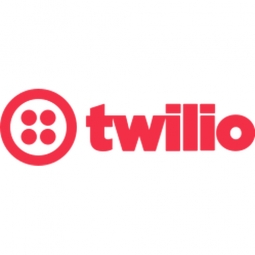Applicable Industries
- Finance & Insurance
- Telecommunications
Use Cases
- Speech Recognition
- Usage-Based Insurance
Services
- System Integration
About The Customer
QuoteWizard is a company that specializes in connecting consumers with insurance agents. The company allows consumers to shop for insurance policies with speed and efficiency. Visitors describe the policy they require, and within seconds, several trusted insurance agents in their area provide competing quotes. The consumer then selects the best policy and connects to the agent on the phone in real time to complete the purchase. When QuoteWizard successfully connects a buyer to an agent, they get paid for the lead. The company was founded in 2006 and is headquartered in Seattle, WA.
The Challenge
QuoteWizard, a company that connects consumers with insurance agents, faced a significant challenge when their telephony provider experienced an outage that lasted for days. This outage caused their Interactive Voice Response (IVR) and lead generation infrastructure to go offline, severely impacting their operations. The reliability of their phone infrastructure was crucial for their revenue stream, as they get paid for every successful connection between a buyer and an agent. The outage not only disrupted their services but also left the team in a state of uncertainty and stress. The situation was further exacerbated when, even after 24 hours, the outage was not resolved, leaving QuoteWizard's telephony services still down.
The Solution
In response to the prolonged outage, the team at QuoteWizard decided to re-deploy using Twilio's Voice API and integrated IVR capabilities. Within a short span of four hours, they were able to build, test, and deploy a working replacement for their existing provider. This rapid transition was made while their existing service provider's outage was still ongoing. The team used ColdFusion to leverage the Twilio API and integrated it into their web interfaces to provide phone-based enhancements to business procedures. The newly implemented Twilio solution replaced the old processes and has been in use since then. This solution not only dramatically reduced downtime but also scaled smoothly as their volume increased.
Operational Impact
Quantitative Benefit

Case Study missing?
Start adding your own!
Register with your work email and create a new case study profile for your business.
Related Case Studies.

Case Study
Real-time In-vehicle Monitoring
The telematic solution provides this vital premium-adjusting information. The solution also helps detect and deter vehicle or trailer theft – as soon as a theft occurs, monitoring personnel can alert the appropriate authorities, providing an exact location.“With more and more insurance companies and major fleet operators interested in monitoring driver behaviour on the grounds of road safety, efficient logistics and costs, the market for this type of device and associated e-business services is growing rapidly within Italy and the rest of Europe,” says Franco.“The insurance companies are especially interested in the pay-per-use and pay-as-you-drive applications while other organisations employ the technology for road user charging.”“One million vehicles in Italy currently carry such devices and forecasts indicate that the European market will increase tenfold by 2014.However, for our technology to work effectively, we needed a highly reliable wireless data network to carry the information between the vehicles and monitoring stations.”

Case Study
Vodafone Hosted On AWS
Vodafone found that traffic for the applications peak during the four-month period when the international cricket season is at its height in Australia. During the 2011/2012 cricket season, 700,000 consumers downloaded the Cricket Live Australia application. Vodafone needed to be able to meet customer demand, but didn’t want to invest in additional resources that would be underutilized during cricket’s off-season.

Case Study
SKT, Construction of Smart Office Environment
SK T-Tower is the headquarters of SK Telecom. Inside the building, different types of mobile devices, such as laptops, smartphones and tablets, are in use, and with the increase in WLAN traffic and the use of quality multimedia data, the volume of wireless data sees an explosive growth. Users want limitless Internet access in various places in addition to designated areas.






